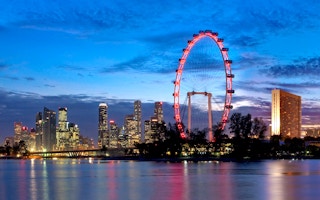Some homes in Singapore could be powered by the sea in future - if scientists manage to prove that tidal turbines in nearby waters can help meet the country’s growing electricity needs.
From next month, researchers from Nanyang Technological University (NTU) will survey two sites, one near St John’s Island and another near Pulau Sebarok.
The two locations are believed to have strong current speeds of about 1.2m to 3m per second - enough to generate power from turbines placed on seabeds.
Based on estimates by other researchers, the two spots could house enough tidal turbines to power about 6,700 flats here, said project leader Michael Abundo from the Energy Research Institute at NTU.
The project will involve confirming the estimated tidal current speeds. Sensors will also be left on the seabed for a month to collect data, which will allow the scientists to forecast long-term current speeds.
“Wind and solar energy may be affected by the weather, but tidal currents are very predictable. If you have data from one lunar month or 29.5 days, you can forecast the current every hour for the next year,” said Dr Abundo.
The two sites were selected after ruling out other areas which had maritime traffic, or were aquaculture zones and marine protected areas.
Results from the survey will be ready by the end of the year, and will be used to fine-tune the turbine designs.
Turbines in other countries have been designed for higher current speeds of about 4m per second. The survey will also include a sonar scan to profile the seabed’s slopes, as steep slopes are not suited for most tidal turbines.
This is all part of a larger plan by the institute to map areas where Singapore can tap renewable marine energy. The scientists believe the project is critical because renewable energy from the sea can help quench the country’s growing thirst for electricity.
Singapore consumed about 41,730 gigawatt hours of energy in 2011, up about 10 per cent from 2009. About 80 per cent of its fuel mix for electricity generation today comes from natural gas.
The NTU team had previously estimated that tidal currents in several spots south of Singapore could meet 1.5 per cent of the country’s electricity needs in 2011.
But there are challenges ahead.
The Energy Market Authority has said that marine renewable energy is limited in Singapore as much of its sea space is used for ports, anchorage and shipping lanes. Most funded projects here are also focused on solar energy.
“Singapore should not disregard any energy option that is tappable,” argued Dr Abundo.
“Even if the technology may not yet be widely deployed in Singapore, it could still be used elsewhere in the region, and this would boost Singapore’s reputation for renewable energy research and development.”










